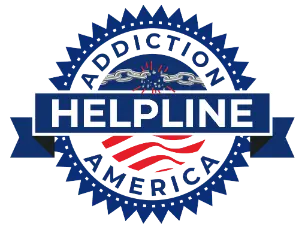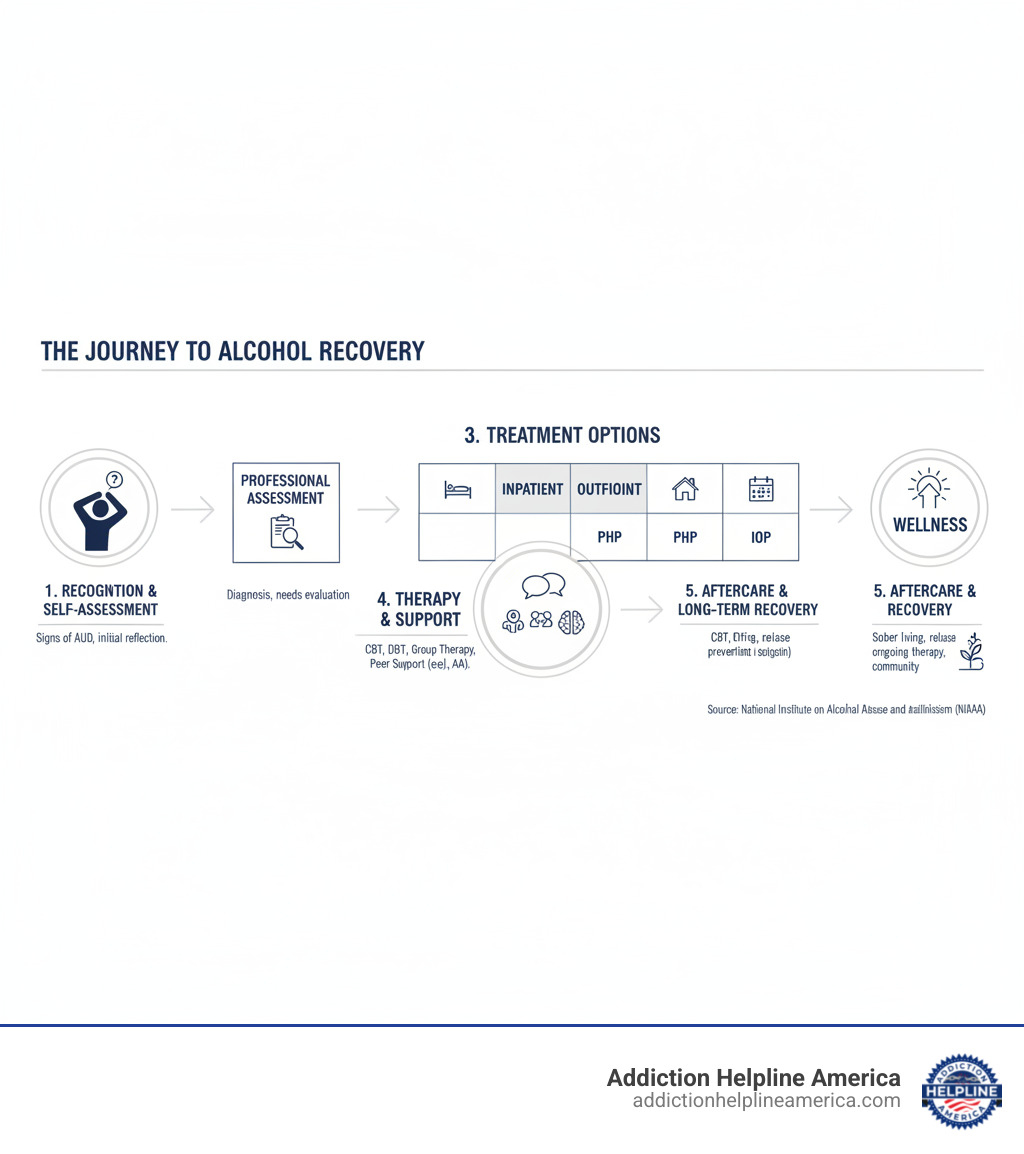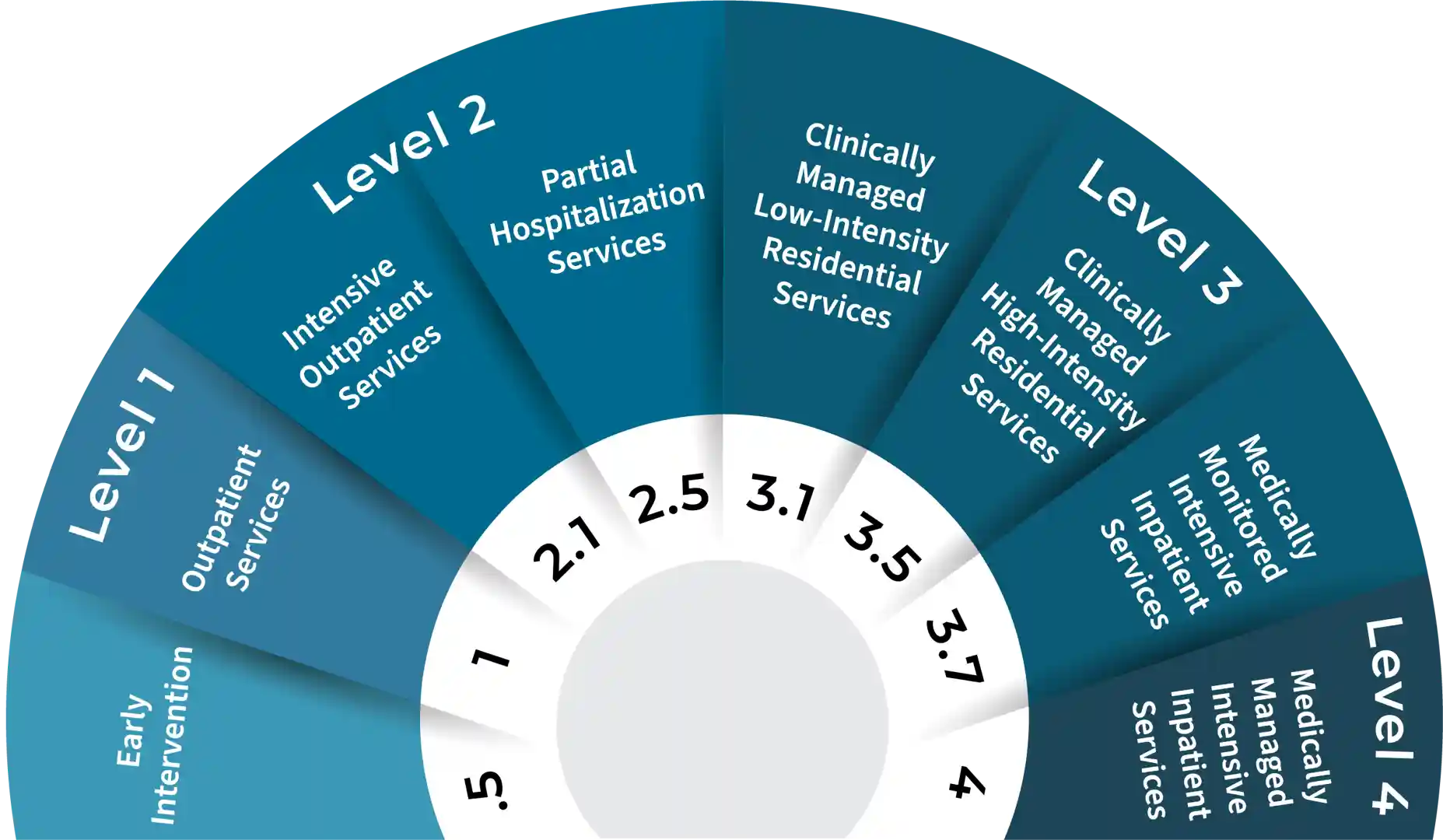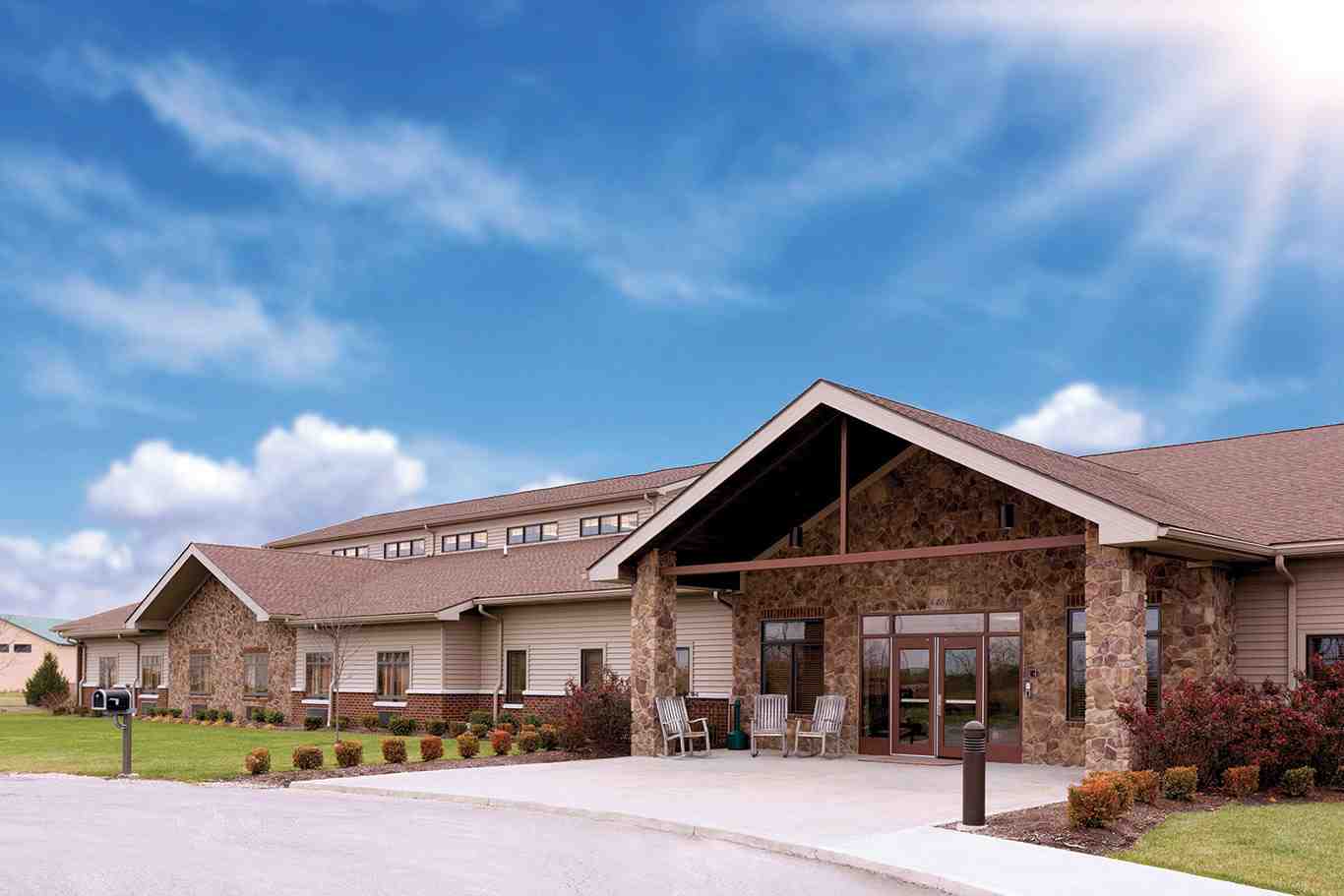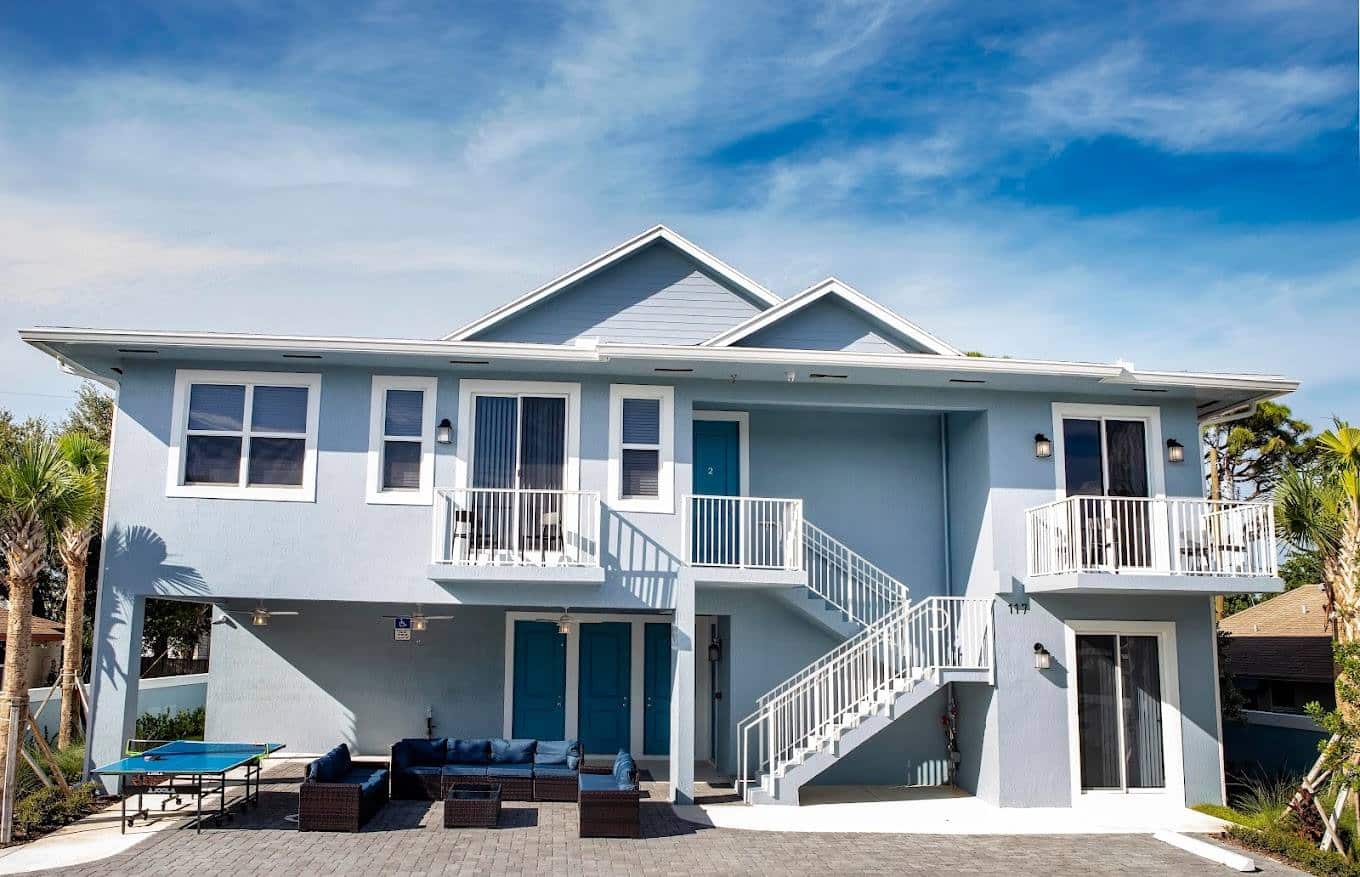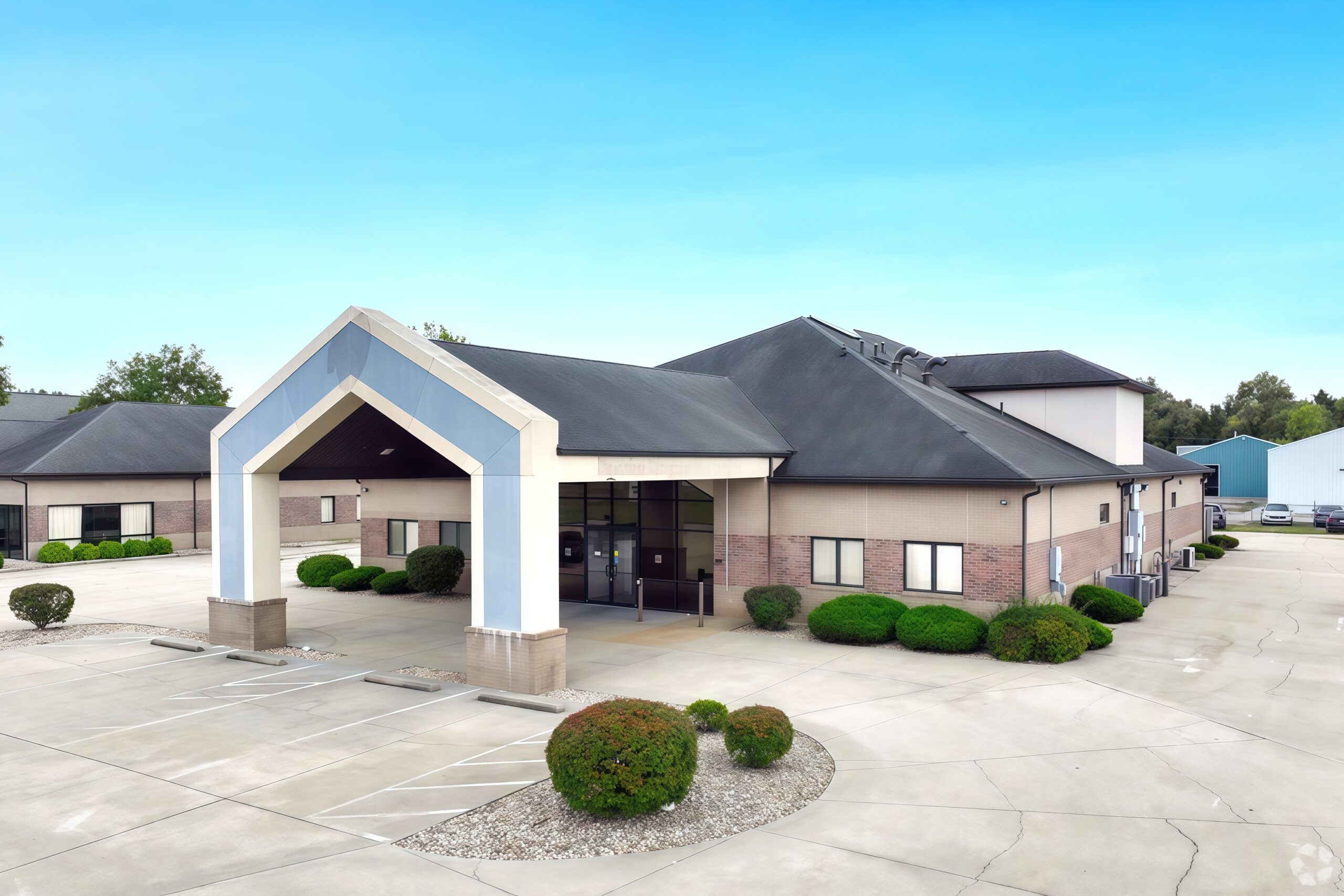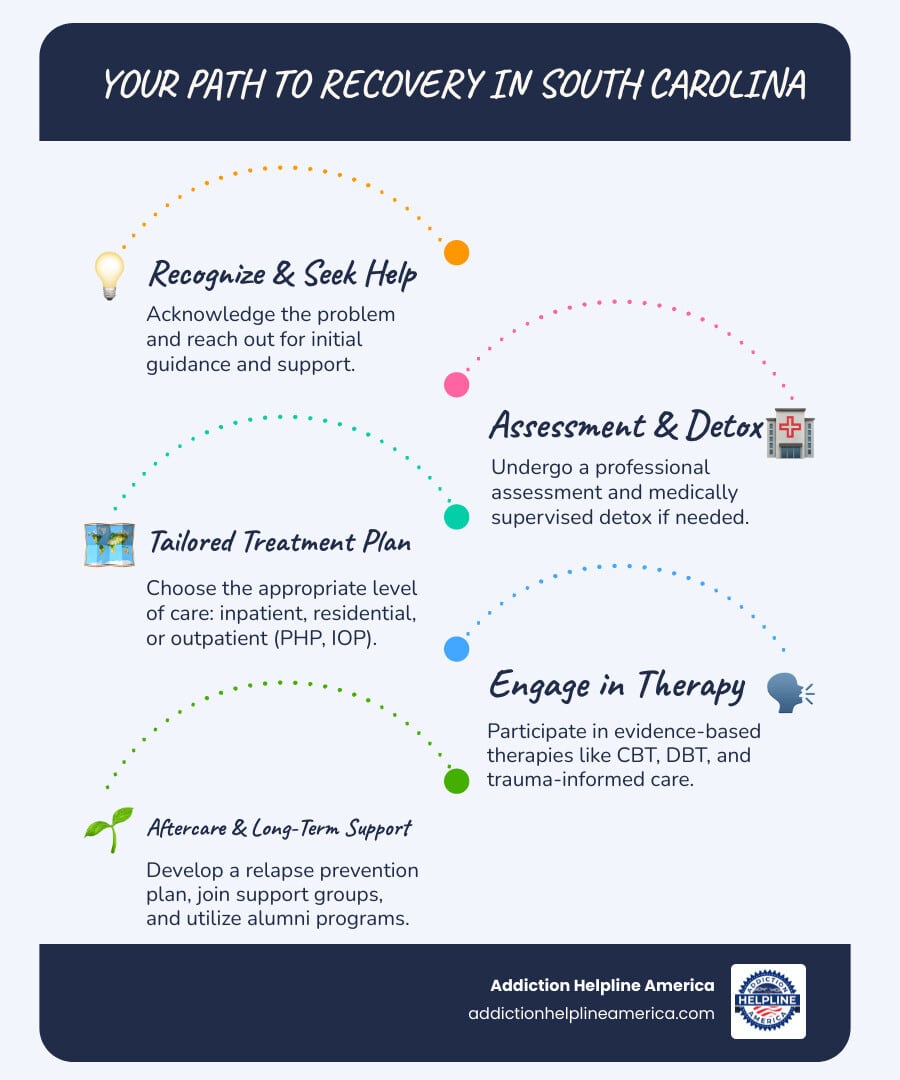
Understanding Your Path to Recovery from Alcohol Use Disorder
Alcohol rehab options are treatment programs designed to help individuals overcome alcohol addiction. If you’re exploring these options, you’re not alone. Approximately 14.8 million Americans have an alcohol use disorder (AUD), yet only about 6.5% seek treatment.
Taking the first step can feel overwhelming due to the number of choices and fear of the unknown. But recovery is possible. About one-third of people who complete treatment have no further symptoms one year later. This guide will help you understand the different types of rehab, how to choose the right one, and how to afford it.
Here are the main types of alcohol rehab available:
- Inpatient/Residential Treatment: 24/7 care in a facility, typically for 30-90 days.
- Outpatient Treatment: Flexible therapy sessions while you live at home.
- Partial Hospitalization Program (PHP): Intensive daytime treatment (20+ hours/week).
- Intensive Outpatient Program (IOP): Structured therapy (9-19 hours/week) with more flexibility.
- Medical Detox: Medically supervised withdrawal, often the first step.
- Support Groups: Peer-led programs like Alcoholics Anonymous (AA).
The right choice depends on your addiction severity, home life, and personal goals.
At Addiction Helpline America, we guide individuals and families through this process. Our specialists connect people with evidence-based alcohol rehab options that match their unique needs. Whether you need 24/7 care or a flexible program, a suitable approach exists. Let’s explore your options.
Recognizing the Need for Treatment: Signs of Alcohol Use Disorder
Realizing that drinking has become a problem is a critical first step. Alcohol Use Disorder (AUD) is a medical condition, not a character flaw. It’s a brain disease that exists on a spectrum from mild to severe, as defined by the National Institute on Alcohol Abuse and Alcoholism (NIAAA).
Understanding where you fall on this spectrum helps in finding the right alcohol rehab options. Often, others notice the signs first, but deep down, most people struggling with alcohol know something is wrong. If you recognize several of the following signs from the past year, it may be time to seek professional help.
- Drinking more or for longer than intended.
- Trying to cut down or stop drinking but being unable to.
- Experiencing strong cravings for alcohol.
- Spending a lot of time drinking or recovering from its effects.
- Neglecting responsibilities at work, school, or home due to drinking.
- Continuing to drink despite it causing problems in your relationships.
- Giving up on hobbies and activities you once enjoyed in favor of drinking.
- Engaging in risky behaviors while drinking, such as driving.
- Continuing to drink even when it worsens depression, anxiety, or another health problem.
- Developing a tolerance, needing more alcohol to get the same effect.
- Experiencing withdrawal symptoms (like shaking, nausea, or anxiety) when you stop.
This isn’t about labeling yourself; it’s about recognizing a health issue that responds well to treatment. The NIAAA’s Rethinking Drinking campaign offers non-judgmental, research-based information to help assess your drinking patterns.
Only about 6.5% of adults with AUD seek treatment. Many struggle in silence, thinking their situation isn’t “bad enough.” You don’t have to hit rock bottom to ask for help. Early intervention often leads to better outcomes.
At Addiction Helpline America, we understand how hard it is to admit you need support. We offer compassionate, practical guidance toward the alcohol rehab options that fit your situation, without judgment. Recognizing the problem is the hardest part; from here, we can help you find a path forward.
The Spectrum of Alcohol Rehab Options
Recovery is not one-size-fits-all. The world of alcohol rehab options offers a “continuum of care,” with different levels of support to match individual needs. You might start at one level and move to another as you progress in your recovery.
Inpatient and Residential Treatment
Inpatient programs provide 24/7 medical supervision and support in a treatment facility. This immersive environment removes you from daily triggers and stressors, allowing you to focus solely on recovery. It is often essential for those with severe AUD, as alcohol withdrawal can be dangerous without professional oversight during medical detox. These programs, typically lasting 30 to 90 days, are also ideal for individuals with co-occurring mental health disorders, offering integrated care in one location. Days are highly structured with individual and group therapy, educational workshops, and skill-building activities.
Outpatient Treatment Programs
Outpatient programs offer professional support while you live at home and maintain daily responsibilities like work or family care. You attend scheduled therapy sessions at a facility and apply what you learn in your real-world environment. This flexibility is ideal for those with milder AUD or a strong, stable support system at home. Outpatient care also serves as an effective step-down from a more intensive program, helping you transition back to independence.
Partial Hospitalization (PHP) and Intensive Outpatient (IOP)
For those needing a middle ground, Partial Hospitalization Programs (PHPs) and Intensive Outpatient Programs (IOPs) offer more structure than standard outpatient care without requiring you to live at a facility.
- PHPs are more intensive, requiring 20 or more hours of treatment per week. It’s like a full-time day job focused on recovery, while you return home at night. This is suitable for those who need significant support but have a stable home environment.
- IOPs are less intensive, involving 9 to 19 hours of services per week. Sessions are often scheduled in the evenings or on certain weekdays, allowing you to continue with work or school. IOPs are a great step-down from inpatient or PHP care.
Both programs provide a mix of individual therapy, group counseling, and relapse prevention education, offering supported practice for real-world challenges.
Inpatient vs. Outpatient Rehab
Here is a side-by-side comparison of these primary alcohol rehab options:
| Feature | Inpatient/Residential Treatment | Outpatient Treatment Programs |
|---|---|---|
| Structure | Highly structured, 24/7 supervision, living at facility | Flexible, scheduled sessions, living at home |
| Intensity | High (medical detox, intensive therapy, round-the-clock support) | Low to moderate (individual/group therapy, education) |
| Duration | Typically 30-90 days, can be longer | Varies (weeks to months), based on progress and needs |
| Cost | Generally higher | Generally lower |
| Ideal Candidate | Severe AUD, unstable home, co-occurring disorders, high relapse risk | Milder AUD, stable home, strong support system, work/school commitments |
| Living Situation | Resides at the treatment facility | Resides at home |
Your treatment journey may involve several of these options. The goal is to find the right level of support for you today, with the flexibility to adjust as your needs evolve.
How to Choose the Right Level of Care
Finding the right alcohol rehab options is about matching the treatment to your unique needs, health, and life circumstances. Effective treatment is personalized, designed to give you the best chance at lasting sobriety.
Assessing Your Personal Treatment Needs
Choosing the right care level begins with an honest assessment. Professionals use criteria like the ASAM Criteria to evaluate key areas of your life:
- Withdrawal Risk: Heavy, long-term drinking can make withdrawal dangerous, requiring medical detox with 24/7 supervision.
- Physical Health: Co-existing medical conditions may require the intensive medical monitoring available in an inpatient setting.
- Mental Health: Co-occurring disorders like depression or anxiety are best treated in an integrated program that addresses both addiction and mental health simultaneously.
- Readiness to Change: Your motivation and stage in the recovery journey help determine whether an intensive or more gradual approach is best.
- Relapse Potential: Your triggers, history, and environment help determine the level of structure you need to prevent relapse.
- Living Situation: An unstable or unsupportive home environment may make residential treatment necessary to build a solid foundation for recovery.
Hallmarks of a Quality Alcohol Rehab Program
When comparing alcohol rehab options, look for these signs of a high-quality program:
- Accreditation and Licensing: The facility should be licensed by the state and accredited by a recognized body like The Joint Commission or CARF.
- Evidence-Based Practices: The program should use scientifically proven therapies like Cognitive Behavioral Therapy (CBT) or Motivational Interviewing.
- Qualified Staff: Look for licensed medical professionals, therapists, and certified addiction counselors.
- Individualized Treatment Plans: A quality program will create a personalized plan based on a thorough assessment of your needs.
- Aftercare Planning: The program should prepare you for long-term success with a comprehensive plan for ongoing support after you leave.
- Family Involvement: Programs that offer family therapy and education help heal relationships and build a strong support system.
Key Questions to Ask and Red Flags to Avoid
When evaluating a treatment center, be prepared to ask questions. A reputable program will be transparent.
Key Questions to Ask:
- What types of evidence-based therapies do you use?
- What is your patient-to-counselor ratio?
- How do you create and adapt individualized treatment plans?
- What is the typical length of your program?
- What aftercare and relapse prevention services are included?
- How do you handle relapse?
- Do you offer integrated treatment for co-occurring mental health conditions?
- What is the total cost, and what are my payment options?
- What is your policy on family involvement?
- Are medical detox services available on-site?
Red Flags to Avoid:
- “Guaranteed cure” promises: Addiction is a chronic disease; there are no guarantees.
- High-pressure sales tactics: You should be given time to make an informed decision.
- Vague pricing: Costs should be clear and provided upfront.
- Overemphasis on luxury amenities: Clinical quality is more important than perks.
- Lack of accreditation or licensed staff: This is a non-negotiable deal-breaker.
- A one-size-fits-all approach: Treatment must be individualized to be effective.
At Addiction Helpline America, we help you steer these choices, connecting you with vetted programs that meet high standards of care.
Core Components of Effective Alcohol Addiction Treatment
Successful alcohol rehab options take a holistic approach, treating the whole person. Effective programs combine behavioral therapies, medication-assisted treatment (when appropriate), and peer support to build a strong foundation for recovery.
The Role of Behavioral Therapies and Medications
Behavioral therapies are the cornerstone of treatment. They are structured approaches that help you understand the root causes of your drinking, identify triggers, and develop healthy coping strategies.
- Cognitive Behavioral Therapy (CBT) helps you identify and change negative thought patterns that lead to drinking.
- Motivational Interviewing (MI) helps you find your own internal motivation to change, which is especially useful if you feel ambivalent about recovery.
- Dialectical Behavior Therapy (DBT) teaches skills in mindfulness, distress tolerance, and emotion regulation, which are crucial for managing life without alcohol.
- Family Counseling helps heal relationships, improve communication, and teach loved ones how to provide healthy support.
In addition, several non-addictive, FDA-approved medications can make recovery easier by reducing cravings and preventing relapse.
- Naltrexone blocks the pleasurable effects of alcohol, reducing the reward and cravings.
- Acamprosate helps ease long-term withdrawal symptoms like anxiety and restlessness.
- Disulfiram causes an unpleasant physical reaction if alcohol is consumed, acting as a strong deterrent.
These medications are tools to support your recovery, not a replacement for therapy. For more information, the NIAAA Alcohol Treatment Navigator® is a valuable resource.
The Importance of Aftercare and Support for Long-Term Recovery
Completing a rehab program is a major achievement, but it’s the beginning of a lifelong journey. Aftercare is critical for maintaining sobriety and bridges the gap between structured treatment and everyday life. Most treatment facilities offer aftercare services.
Key components of aftercare include:
- Relapse Prevention Planning: Working with a counselor to create a concrete plan for handling triggers and cravings.
- Ongoing Therapy: Continuing with individual or group therapy provides accountability and a safe space to steer challenges.
- Sober Living Homes: These transitional residences offer a supportive, alcohol-free environment with others in recovery.
- Peer Support Groups: Organizations like Alcoholics Anonymous (AA), SMART Recovery, and LifeRing offer free, peer-led meetings that provide profound connection and encouragement.
- Family Support Programs: Groups like Al-Anon and family training programs like CRAFT help loved ones heal and learn how to support your recovery effectively.
Recovery is not always a straight line. A strong aftercare plan provides the tools to steer setbacks and continue moving forward. At Addiction Helpline America, we help you build this foundation for lasting recovery.
Navigating Costs and Finding a Program
Concerns about cost should not prevent you from seeking help. While treatment is an investment, there are many ways to make it affordable.
Understanding the Costs of Different Alcohol Rehab Options
The cost of alcohol rehab options varies based on the program type, location, duration, and amenities.
- Outpatient programs are the most affordable, as they don’t include room and board. Costs can range from a few thousand to over $10,000, depending on intensity and duration.
- Inpatient or residential treatment costs more, covering 24/7 care, housing, and meals. A 30-day program can range from $5,000 to $20,000, with luxury facilities costing significantly more.
A higher price doesn’t always mean better clinical care. The priority is finding a quality program with effective, evidence-based therapies.
Payment Options: Insurance and More
Thanks to the Affordable Care Act (ACA), most health insurance plans, including private insurance, Marketplace plans, Medicaid, and Medicare, must cover substance abuse treatment. This has made care accessible to millions.
- Check Your Insurance: Call your provider to understand your coverage, including deductibles, co-payments, and which facilities are in-network to minimize your out-of-pocket costs. Resources like HealthCare.gov can help you understand your rights.
- Medicaid and Medicare: These government programs often cover a substantial portion of treatment at approved facilities.
- Other Options: If you lack insurance, many centers offer sliding scale fees based on income or payment plans. You can also seek out state-funded programs that provide free or low-cost treatment to eligible residents.
How to Find Reputable Alcohol Rehab Options
You don’t have to steer this search alone. There are several reliable resources to help you find the right program.
- Addiction Helpline America: We provide free, confidential, and personalized guidance. Our team can match you with reputable alcohol rehab options from our nationwide network that fit your specific needs and insurance.
- SAMHSA’s National Helpline: Call 1-800-662-HELP (4357) or visit FindTreatment.gov for referrals to local treatment facilities, support groups, and community-based organizations.
- NIAAA Alcohol Treatment Navigator®: This tool provides a step-by-step guide to finding high-quality alcohol treatment.
- Your Primary Care Doctor: Your doctor can provide an evaluation and refer you to trusted local specialists.
- International Resources: If you are outside the U.S., look to national health services for guidance, such as the NHS in the UK, Healthdirect in Australia, or the Government of Canada’s help services.
Reaching out is the first step. At Addiction Helpline America, we’re here to simplify the process and ensure you find a program that aligns with your needs.
Frequently Asked Questions about Alcohol Rehab
It’s normal to have questions when considering a major life change. Here are answers to some common concerns about alcohol rehab options.
How effective is alcohol rehab?
Alcohol rehab is effective for many people, but success is a process, not a one-time event. Statistics are encouraging: about one-third of people who complete treatment show no further symptoms and have fewer alcohol-related problems a year later. Success depends on the quality of the program, your personal commitment, and your engagement in aftercare. Relapse does not mean treatment failed; it often means the treatment plan needs adjustment. Addiction is a chronic disease, and managing it is a long-term journey.
What is medical detox?
Medical detox is the process of safely managing the physical symptoms of alcohol withdrawal under the supervision of medical professionals. For those with moderate to severe alcohol dependence, stopping suddenly can be dangerous, leading to symptoms like seizures or delirium tremens. In a detox facility, healthcare providers monitor you 24/7 and may use medications to ensure your safety and comfort. Detox stabilizes you physically, typically over a few days to a week, so you can begin the therapeutic work of rehab.
What is the difference between rehab and peer support groups?
Rehab and peer support groups are both valuable, but they serve different functions.
- Rehab refers to clinical treatment programs led by licensed professionals. It includes services like medical detox, individual and group therapy, medication management, and structured educational sessions. It is a form of professional healthcare.
- Peer support groups (like Alcoholics Anonymous or SMART Recovery) are non-professional, peer-led gatherings. They provide mutual encouragement and a shared community for people in recovery. They are typically free and focus on shared experience rather than clinical intervention.
Many people find that combining professional rehab with ongoing participation in peer support groups offers the most robust foundation for long-term sobriety.
Take the First Step Toward Recovery Today
You’ve now learned that alcohol rehab options offer a spectrum of care, from 24/7 inpatient facilities to flexible outpatient programs. There is a path that can be custom to your unique situation, responsibilities, and needs.
Recognizing you need help is a sign of strength, not weakness. While millions of Americans struggle with alcohol use disorder, only a small fraction seek the treatment that could change their lives. Recovery is not just possible—it happens every day. People rebuild their lives, repair relationships, and find a future free from alcohol.
Your circumstances are unique, and your treatment should be too. A cookie-cutter approach is not effective. You deserve personalized care that addresses you as a whole person.
At Addiction Helpline America, this is our mission. We listen to your story and use our expertise to connect you with a program that truly fits. Our guidance is free, confidential, and focused on finding the best path for you. You don’t have to figure out insurance, program types, or treatment quality on your own.
The journey to recovery can begin today. Let us help you take the first step with confidence.
Find the right alcohol rehab program for you and let us help you write the next chapter.
Our helpline is 100%
free & confidential
If you or someone you care about is struggling with drug or alcohol addiction, we can help you explore your recovery options. Don’t face this challenge alone—seek support from us.
Programs
Resources
Will my insurance
cover addiction
treatment?
We're ready to help
Find the best
drug or alcohol treatment
center
Are you or a loved one struggling with addiction? Call today to speak to a treatment expert.
